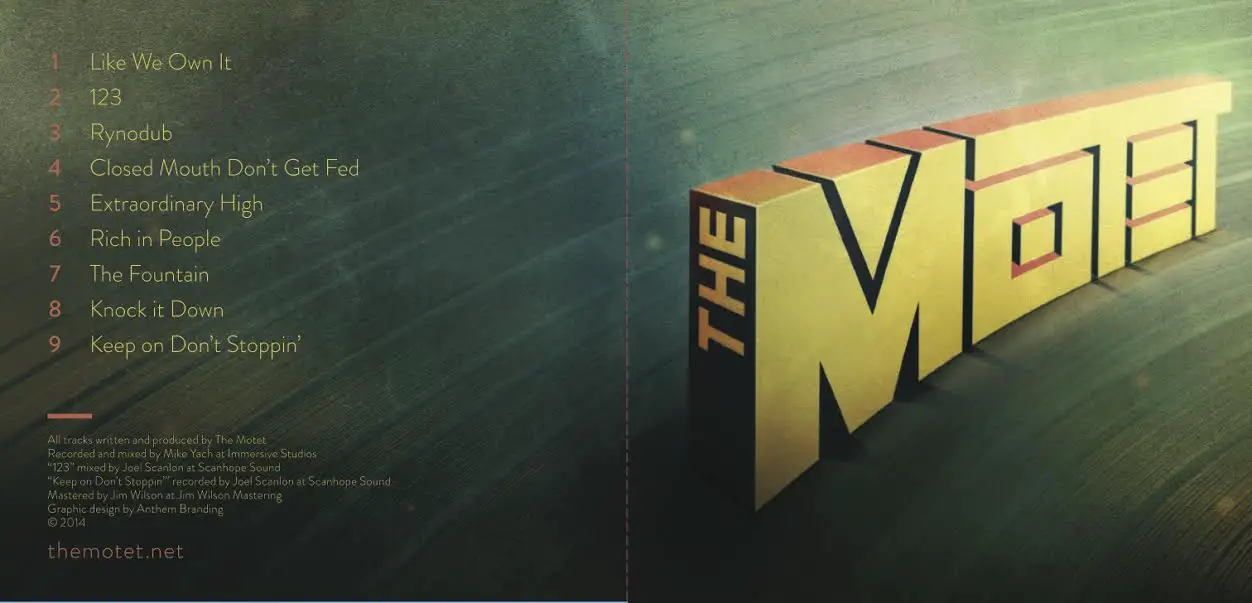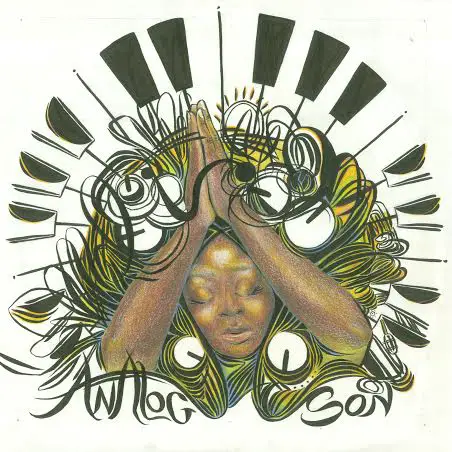Music is a ubiquitous part of my life because it has the power to make it better. On countless occasions, it has demonstrated the ability to rejuvenate me when I’m sapped of energy and to will me out of a funk when I’m frustrated or down in the dumps. It even has the power to enliven my spirits for weeks without even yet being heard – anyone who lives for the music knows what it’s like to anticipate a show weeks, or even months, ahead of time. I’ve had friends and colleagues come up to me and say, “Why are you standing there, staring at nothing, and smiling like an idiot?” When I explain myself, only those who live for the sound seem to understand.
I have worn the same grin around my face for almost two weeks now in anticipation of The Motet’s January 25 gig at The Fillmore. Officially, it is an album release party and, as you likely gleaned from the interview, it is a more-than-worthy listen. It is also totally apropos that the album has no title. Like The Beatles’ White Album and Led Zeppelin IV (both of which necessarily assumed unofficial nicknames), The Motet’s eponymous album represents everything that is pure, organic, and blissful about the band’s music. The soundscape, while variegated throughout the nine pieces, never looses its common thread. Whether exploring soul-driven funk on its first offering, Like We Own It, or reggae brass trance on one of its best tracks, Rynodub, The Motet has fashioned an album that will put sails underneath the listener’s feet while simultaneously generating the wind to propel them.
And as I alluded to in the interview, the music does not want for anything despite being created in the studio. How easy it is to polish a song that works wonders live – to put make-up on it, do its hair, dress it up in couture, and finish it off with the perfect diamond necklace. Then, what was once a naturally beautiful creature transforms into a dolled-up pageant queen, hauntingly phony and artificial. But since the process of making this album started in the studio and was perfected on the road, all of the music has the same feel to it on the album as it did when The Motet brought the house down at The Fillmore last 4/20. Six of the nine pieces appearing on the eponymous record were played at the pinnacle show.

The first of them to appear on that setlist was 123. A love letter to its Colorado fanbase, the band created a music video to immortalize the Fillmore show and accompany the release of the new album. The song truly speaks to the band members’ feelings that their success is due, in part, to its Colorado following: “I can tell by how you’re dressin’ / I see it when we drop the bass / I can tell by how you party all the time / you’re from that Colorado place.” 123 is easily the most pop-friendly song on the album, but don’t let the “P”-word scare you. It still exhibits The Motet’s signature funk with Sayers layering a lush and punchy bassline throughout.
If the ‘80s are more your thing, check out Like We Own It. Porter ornaments the piece with the type of keyboard jubilance you might expect to find on an early ’80s dance anthem. Vocalists Leisa Hart and Ericka Warren joined Ingber to propel Like We Own It to its own state of anthemic bliss. As the first track on the album, it sets both a lyrical and sonic tone – one that states: “This is going to be a 55-minute journey, so strap on your dancing shoes because you’re going to need them.” Mervine initiates the crescendo with a celebratory solo. Each musician helps to build on Mervine’s energy, filling each successive bar with more notes in the perfect place so each instrument has a separate space to shine in every measure. It’s this type of difficult precision work which The Motet has perfected over the years.
The first time I heard Rynodub, it made me think of the original NES Mario Brothers soundtrack when Mario would go underground for a level. But this is no mere videogame folly. It is a reggae brass trance gem that exemplifies the type of simmering groove the band can establish at a live show. When Jalbert vamps near the end of the piece, he sounds like Santana seducing a crowd in 1970. Almost eerily so.

Rich in People provides Ingber space to say what so many of us are thinking. He is fed up with selfish politicians who care more about getting elected and serving special interests than serving the people who elected them. Ultimately, Ingber’s message is in the title: wealth comes from relationships, not money: “Your money / can’t buy us / no profits / confine us / So see us / as equals / we’re rich / in people.”
The Fountain opens with a short wave of ambient clouds, but quickly gives way to Mervine, Pitts, and Sanchez. They draw us in with a Latin brass riff that teems with sex, rhythm, and instant chemistry. The instrumental piece drifts into an electronic dream, but never lose the palpable force carved out by Watts’s drumming.
The album closes with Keep On Don’t Stoppin’, which puts a lyrical exclamation point on The Motet’s message. But what really makes Keep On Don’t Stoppin’ a highlight of the album are the pair of 30-second waves of sound that will hit you like a euphoric bolt of lightning. The horn section joins forces with a pulsing combination of bass and drums to create a soundscape so sublime, so unerringly powerful, you may have one of two different reactions. If you’re on the dance floor and hear this piece live, you might start jumping up and down as high as you can. Alternately, when I heard the studio version on my Sennheisers, my jaw just dropped in awe. Those 30-second bursts are impossible to describe, but the happiness they create aren’t. So that’s all I can give you. If you buy the album, it’s worth it just for Keep On Don’t Stoppin’.

And speaking of – if you happen to be attending the release party at The Fillmore on January 25, you will be in luck. The Motet’s eponymous album will initially go on sale at the show. And as a thank you to its fans, the band has decided to make it affordable for everyone at $5. So if you love to “dance your ass off”, The Fillmore is the best place to be two Saturdays from now. See you there.



















